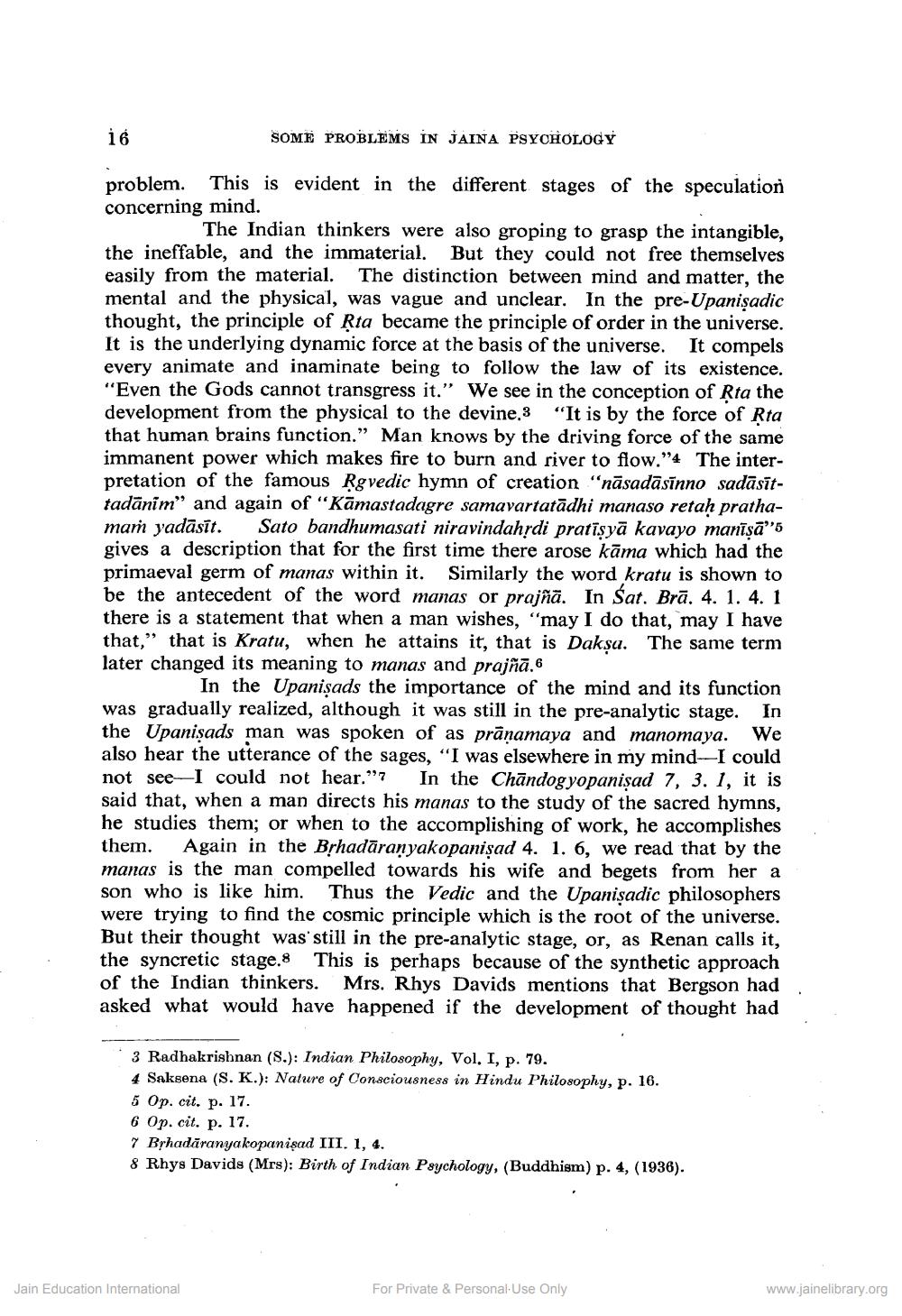________________
16
SOME PROBLEMS IN JAINA PSYCHOLOGY
problem. This is evident in the different stages of the speculation concerning mind.
The Indian thinkers were also groping to grasp the intangible, the ineffable, and the immaterial. But they could not free themselves easily from the material. The distinction between mind and matter, the mental and the physical, was vague and unclear. In the pre-Upanişadic thought, the principle of Řta became the principle of order in the universe. It is the underlying dynamic force at the basis of the universe. It compels every animate and inaminate being to follow the law of its existence. "Even the Gods cannot transgress it.” We see in the conception of Rta the development from the physical to the devine.3 "It is by the force of Rta that human brains function.” Man knows by the driving force of the same immanent power which makes fire to burn and river to flow."4 The interpretation of the famous Rgvedic hymn of creation "nāsadāsīnno sadāsīttadanim" and again of "Kāmastadagre samavartatādhi manaso retah prathamaṁ yadāsīt. Sato bandhumasati niravindahrdi pratīsyā kavayo manīsā''5 gives a description that for the first time there arose kāma which had the primaeval germ of manas within it. Similarly the word kratu is shown to be the antecedent of the word manas or prajñā. In Sat. Brā. 4. 1. 4. 1 there is a statement that when a man wishes, "may I do that, may I have that,” that is Kratu, when he attains it, that is Daksa. The same term later changed its meaning to manas and prajñā.6
In the Upanişads the importance of the mind and its function was gradually realized, although it was still in the pre-analytic stage. In the Upanişads man was spoken of as prānamaya and manomaya. We also hear the utterance of the sages, “I was elsewhere in my mind-- I could not see I could not hear."'7 In the Chāndog yopanişad 7, 3. 1, it is said that, when a man directs his manas to the study of the sacred hymns, he studies them; or when to the accomplishing of work, he accomplishes them. Again in the Brhadāranyakopanisad 4. 1. 6, we read that by the manas is the man compelled towards his wife and begets from her a son who is like him. Thus the Vedic and the Upanisadic philosophers were trying to find the cosmic principle which is the root of the universe. But their thought was still in the pre-analytic stage, or, as Renan calls it, the syncretic stage.8 This is perhaps because of the synthetic approach of the Indian thinkers. Mrs. Rhys Davids mentions that Bergson had asked what would have happened if the development of thought had
3 Radhakrishnan (S.): Indian Philosophy, Vol. I, p. 79. 4 Saksena (S. K.): Nature of Consciousness in Hindu Philosophy, p. 16. 5 Op. cit. p. 17. 6 Op. cit. p. 17. 7 Brhadāranya kopanisad III. 1, 4. 8 Rhys Davids (Mrs): Birth of Indian Psychology, (Buddhism) p. 4, (1936).
Jain Education International
For Private & Personal Use Only
www.jainelibrary.org




